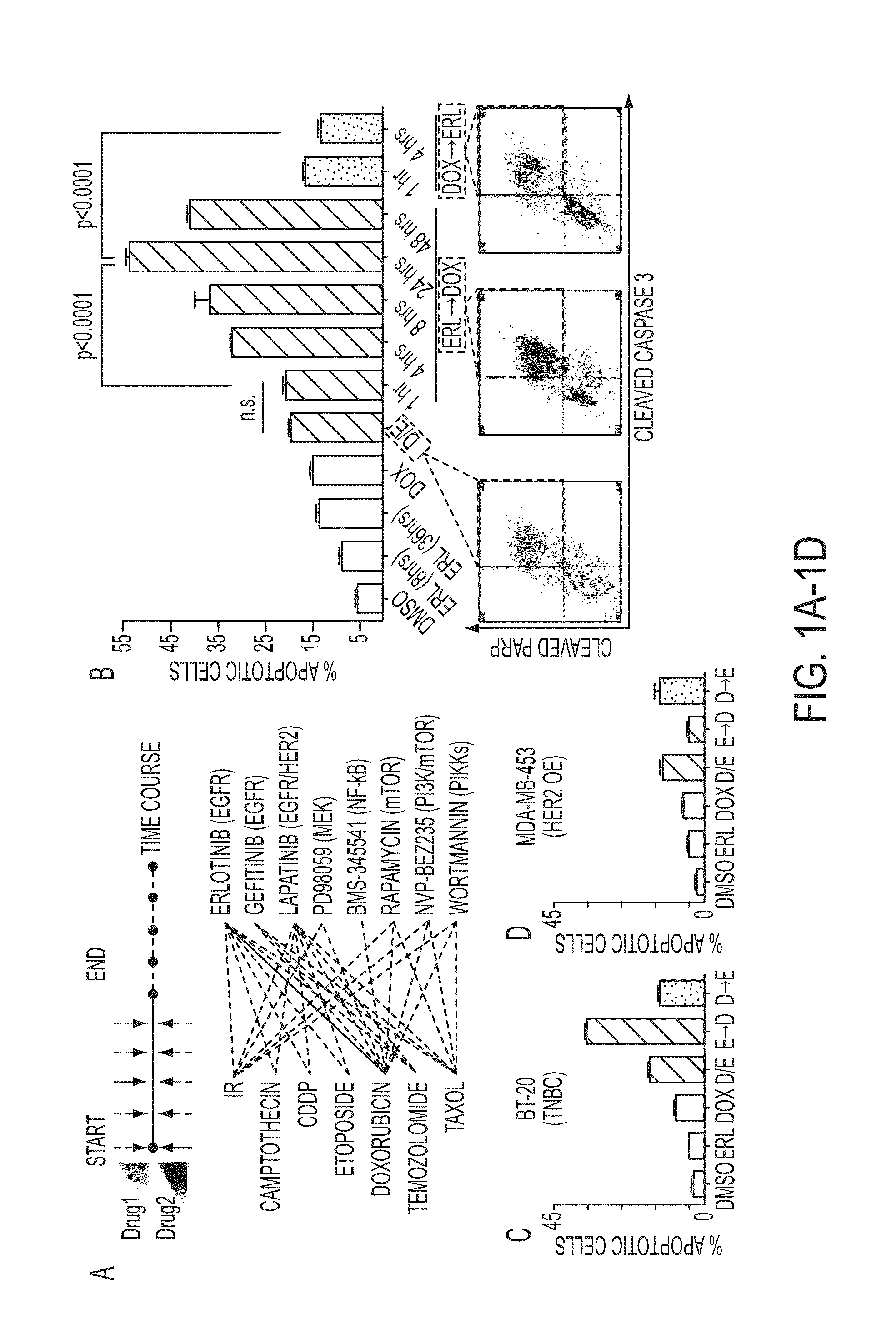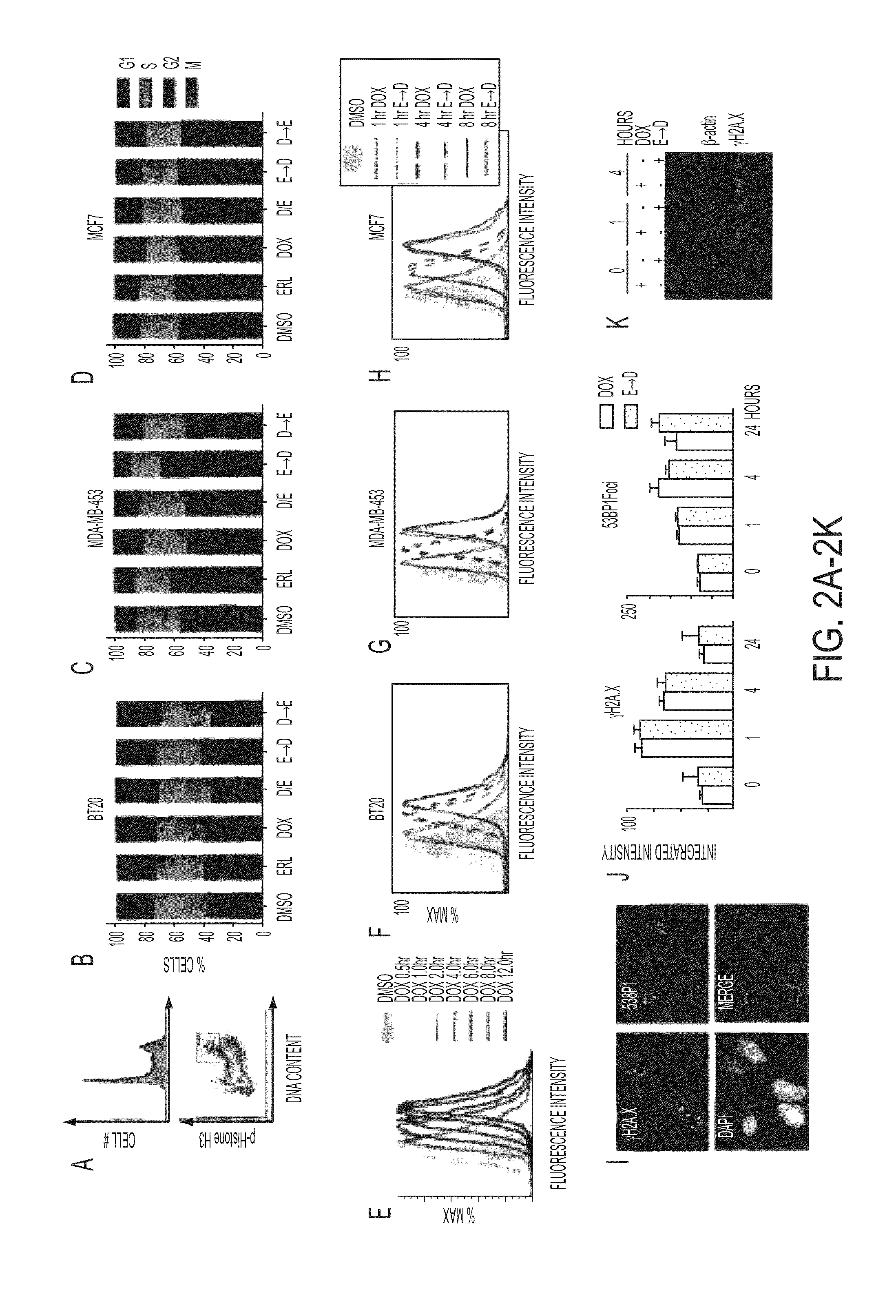Compositions and methods of treatment of drug resistant cancers
a cancer and drug resistance technology, applied in the field of compositions and methods of treatment of drug resistant cancers, can solve the problems of difficult to predict a priori how many multiples will be processed by the cell, the prognosis is typically worse, and the signal processing is often conflicting, so as to achieve synergistic effect of apoptosis
- Summary
- Abstract
- Description
- Claims
- Application Information
AI Technical Summary
Benefits of technology
Problems solved by technology
Method used
Image
Examples
Embodiment Construction
I. Compositions
[0036]A. Therapeutic Agents
[0037]1. EGFR Inhibitors
[0038]Compounds that inhibit the EGFR pathway may be useful.
[0039]Erlotinib, gefitinbib, herceptin, and tarceva target EGFR family members.
[0040]Sunitinib targets multiple receptor tyrosoine kinase inhibitors.
[0041]Imatinib targets Abl kinase and PDGF receptors.
[0042]Bevacizumab targets VEGF receptors.
[0043]Sorafenib targets B-Raf.
[0044]BEZ-235 targets PI 3-kinase and mTor.
[0045]Torin and rapamycin target mTor.
[0046]PD98059 and related compounds target MEK kinase.
[0047]SB203580 targets p38 MAPK.
[0048]Wortmannin and LY294002 target PI 3-kinase.
[0049]PF-3758309 targets p21-activated kinases.
[0050]BIBF1120 and Ponatinib inhibits FGF receptor.
[0051]SP600125 inhibits JNK kinases.
[0052]Preferred compounds are described in the studies below.
[0053]Erlotinib hydrochloride (trade name Tarceva) is a drug used to treat non-small cell lung cancer, pancreatic cancer and several other types of cancer. It is a reversible tyrosine kin...
PUM
| Property | Measurement | Unit |
|---|---|---|
| Time | aaaaa | aaaaa |
Abstract
Description
Claims
Application Information
 Login to View More
Login to View More - R&D
- Intellectual Property
- Life Sciences
- Materials
- Tech Scout
- Unparalleled Data Quality
- Higher Quality Content
- 60% Fewer Hallucinations
Browse by: Latest US Patents, China's latest patents, Technical Efficacy Thesaurus, Application Domain, Technology Topic, Popular Technical Reports.
© 2025 PatSnap. All rights reserved.Legal|Privacy policy|Modern Slavery Act Transparency Statement|Sitemap|About US| Contact US: help@patsnap.com



